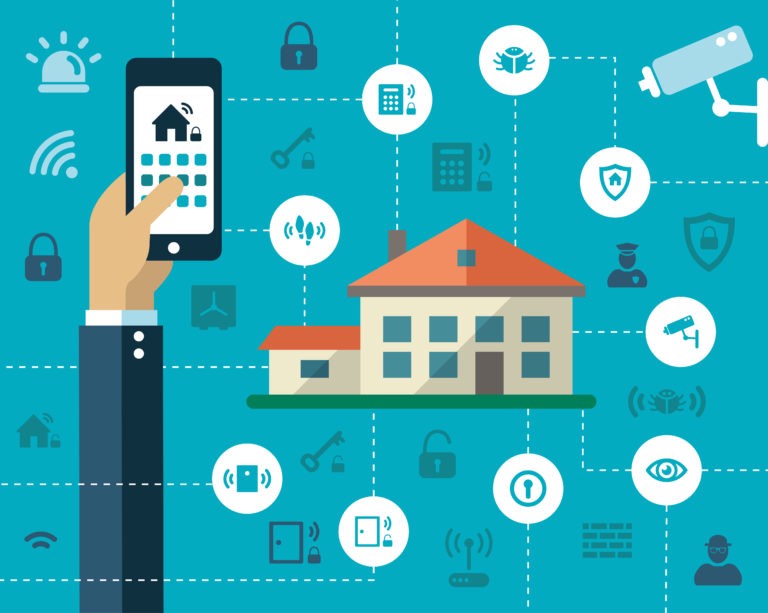The Internet of Things (IoT) is one of the most talked-about technology in recent times, and it’s for good reasons. IoT has disrupted virtually almost all industries from oil & gas to the health industry to the transport industry. Technological advancement in IoT has made a lot of innovations and inventions possible in all these industries. Even industries you least expect to benefit from IoT such as the hospitality industry are benefitting immensely from it.
IoT is a broad topic and has a lot of applications in the world today. The most familiar example to you is probably a smart home. In a smart home, you might be able to do things such as turning on or off the light, increasing or decreasing the temperature, or even making coffee all from your smartphone. If you have a smart speaker like Alexa or Google Assistant, you can even give voice commands to carry out those actions instead. But what exactly is IoT?
What is IoT?
Just by looking at the phrase, you would have discerned that the Internet of Things has something to do with the internet, and you would be right. IoT, to put it simply, is a situation where everyday items such as toasters, fridges, and thermostats can communicate over the internet just like we do with our phones and PCs. The question that now arises is: why do we need to connect these devices to the internet?

Well, if you think about it, your smartphones and PCs can do a lot of things. But without the internet, they are pretty limited. This also applies to other things. By connecting these ‘things’ to the internet, they become much more powerful than they initially were. Take a bulb for example. You can turn a bulb on or off, that’s all. By connecting a bulb to the internet, you can turn it on or off through a smartphone or any other device connected to the internet.
Examples of IoT Devices
There are several examples of IoT devices around us. In our homes, your smart speaker is an IoT device, so is your smart fridge, your smart TV, your smart bulb, and so on. Almost any home appliance with ‘smart’ preceding it is an IoT device. IoT is also used in the health industry. There are medical IoT devices that can be used to track a patient’s vitals. This is especially useful in treating the elderly who can fall ill suddenly.
The information from these devices isn’t stored or processed on the devices but sent to the cloud to be processed and stored for easy access by health care professionals. This information makes it easy for health care professionals to spot potential problems easily. There are many IoT devices out there and more devices are constantly being added.
Privacy and Security Concerns
Like with almost anything connected to the internet, IoT devices can be hacked. And we can rest assured the people doing the hacking won’t be doing it for good reasons. Except they are trying to expose the vulnerabilities of course. Unlike smartphones and PCs, IoT devices have been found to be much easier to hack. There are several instances where security experts exposed a vulnerability in a device that could lead to serious security or privacy breach.
The reason IoT devices are so easy to attack can be linked to the ease at which they are designed and manufactured. Most IoT devices are simple devices with very little functionality. Some of them like medical IoT devices only send data to the cloud. Because of this seeming lack of complexity, oftentimes, not enough effort is put into securing them. This could lead to a costly mistake if such a device gets hacked.
About three years back, a group of hackers managed to hack a casino through an internet-connected thermometer located in a fish tank. About 10GB of data was sent out through the hack. So even a device as small and ‘inconsequential’ as a thermometer should be properly secured as long as it would be connected to the internet. Another scary example of a possible security breach in an IoT device is of a vulnerability in a children’s toy — a doll called Cayla, that allows a hacker to listen and talk to children while they are playing with the toy.

Through this, a hacker could convince a child to give up private information about their parents.
Of course, not all IoT devices are this insecure. Companies that implement IoT solutions are also beginning to take security very seriously not wanting to jeopardize their reputation by releasing a product with vulnerabilities. As a consumer of IoT devices, there are also steps you can take to make sure your IoT devices are safe from unauthorized entries.
Securing Your IoT Devices
There are several things you can do to secure your device especially home IoT devices against intrusions by hackers.

1. Ensure your router is secure: Your router is the gateway to the internet for your connected devices. And like every door that has something valuable behind it, it should be properly secured. The first step in securing your router is to change its default name. This might sound a little strange, but the default name of the router identifies the router to a hacker and gives them more information to work with in trying to hack your router.
The second step is to change the default username and password of the router. This is something you have probably heard before, but it is especially important in this case that you change it. Default login details hardly change from one router to another, so it’s quite easy for hackers to guess them and get into your network. When changing your password, make sure the new one is a strong one. Preferably, you could use a password manager to generate a strong password and store it.
2. Create a separate network for your IoT devices: Most modern routers allow the creation of a secondary network. This feature could be used to create a separate network for your IoT devices. That way, a breach in one network doesn’t affect the other.
3. Enable two-factor authentication: Two-factor authentication is a secure login system that requires another authentication method asides your password. The most common way is to send a one-time-password as an SMS or mail to your phone. If you have an IoT device that supports this, enable it to improve security on that device.
4. Change the default security setting on your IoT device: When you purchase an IoT device, some security settings are enabled by default. But sometimes, the manufacturers leave some disabled to make it easier to use. You should check the device’s settings and ensure you enable them for maximum security.
5. Make sure your devices are always updated: Device manufacturers release updates to their devices from time to time. Some of these updates contain important security patches. So it’s vital your IoT devices’ software are kept up to date.
Conclusion
There is no doubt about IoT’s usefulness in the world today. In fact, we are yet to fully experience its benefits. As the years go by, we would see several more innovative ways IoT can be put to use to help humanity. Hopefully, more effort would be put into securing these new IoT devices from hackers as well.
Featured image source: https://www.thedigitaltransformationpeople.com/








